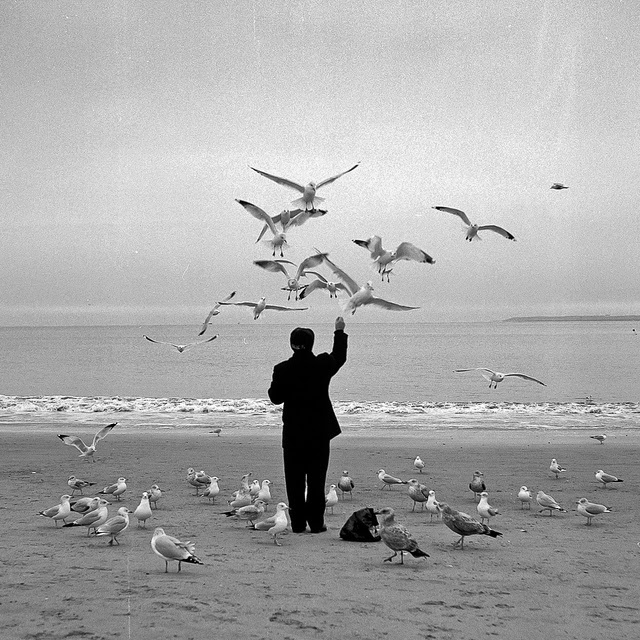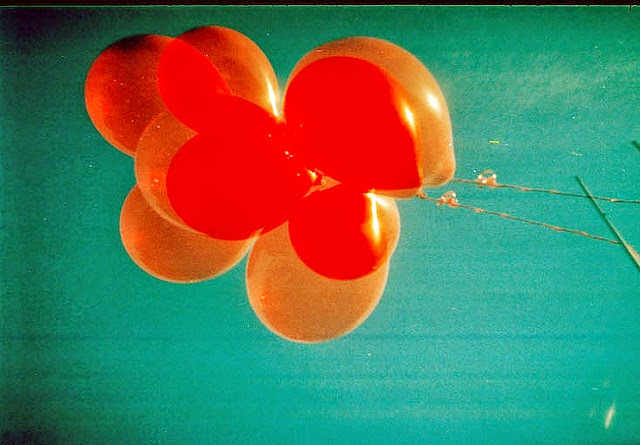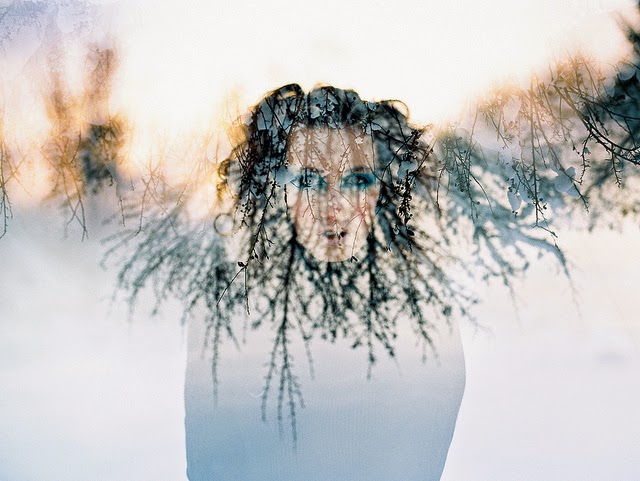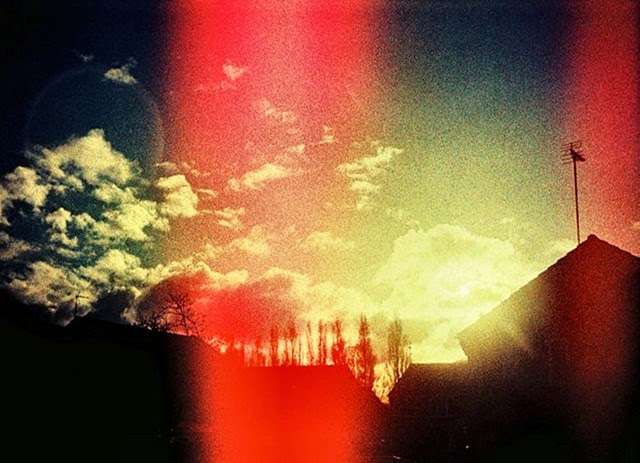The Glossary of Analogue Photography
Film
photography can be complex and the various terms can be difficult to
understand. Here's a glossary contains an alphabetical you will find
some of the common terms used in analogue photography.
120
– A popular film format for still photography used in various medium
format cameras. The 120 film format is a roll film which is nominally 60
mm wide (in fact, about 61 mm).
135 – Also called 35mm
is a film format used for still photography. It is a cartridge film with
a film gauge of 35 mm, typically used for hand-held photography in 35
mm film cameras.
Agitation – Gently moving developing chemicals to evenly process film or photographic prints.
Aperture
– The aperture stop of a photographic lens can be adjusted to control
the amount of light reaching the film or image sensor. In combination
with variation of shutter speed, the aperture size will regulate the
film's or image sensor's degree of exposure to light.
Aperture Priority – Often abbreviated
A or
Av (for
aperture value)
on a camera mode dial, is a setting on some cameras that allows the
user to choose a specific aperture value while the camera selects a
shutter speed to match.
ASA – American Standards
Association is a now defunct rating system for film speed. The ASA
system has been replaced by the universal ISO system. However, it is
still a commonly used term.
Auto Exposure (
AE) – The aperture and shutter speed are automatically determined for exposure.
Auto Focus (
AF) – The ability of a camera lens to automatically find a point of focus.
Bellows
– The pleated expandable part of a camera, usually a large or medium
format camera, to allow the lens to be moved with respect to the focal
plane for focusing.
Black and White (
B&W) – A term referring to a number of monochrome forms in photography.
 |
| Photo by Barry Yanowitz |
Blur
– Subjects within the frame move during a long exposure and are
recorded during movement. This will cause them to look out of focus and
blurry.
Bulb (
B) – A setting on the shutter speed
dial of a film camera that allows you to keep the shutter open for as
long as the shutter release is held.
Burning- A darkroom
technique that singles out specific pieces of a photograph to add more
light to the exposure of the photographic paper, thus darkening the
spot.
C-41 – A chromogenic color print film developing process. C-41 is the most popular film process in use.
Caffenol –
A photographic alternative process whereby caffeine, sodium carbonate
and optionally Vitamin C are used in aqueous solution as a film and
print photographic developer.
Cable Release – A cable that
plugs into your cameras shutter release button and eliminate camera
shake from the force of pushing the shutter release by hand.
Canister – A container for 35mm film for use in cameras.
Close-Up – Photographing an object at very close range.
Color Negative
– When shooting in color film, the negative will show exact opposites
of the original color. When printed to photographic paper, the negative
becomes a positive and shows in full color on the print.
Color Reversal
– Color film that shows the actual color on film. This film cannot be
printed through common darkroom techniques as it requires a negative to
positive, but can be shown through a slide projector.
Composition
– Putting together various visual elements to create a unique
organization or grouping to achieve a unified image or photograph.
Contact Print
– A photographic image produced from film; sometimes from a film
negative, and sometimes from a film positive. The defining
characteristic of a contact print is that the photographic result is
made by exposing through the film negative or positive, onto a light
sensitive material that is pressed tightly to the film.
Contact Sheet
– A set of multiple images printed at the same size as the negative, on
one page. In film photography, contact sheets were often used to
quickly scan for the highest quality images from a roll of film.
Contrast – The relative difference between light and dark areas of the photograph.
Crop – Enlarging a photography to purposely cut-off certain edges of an image when printing negatives.
Cross Processing (or
Xpro) – The
deliberate processing of photographic film in a chemical solution
intended for a different type of film. The effect was discovered
independently by many different photographers often by mistake. Color
cross processed photographs are often characterized by unnatural colors
and high contrast.
 |
| Photo by arigatogozaimasu |
Darkroom – A room without lights that is used to develop and process film and prints.
Depth of Field (
DoF)
– The area between the nearest and furthest objects that appear to be
in focus. This technique is controlled by the aperture of a camera lens.
Developer – The chemical that removes the first layer of emulsion from film or photographic paper and allows the image to be seen.
Developing Tank
– A light-tight container used for developing film. A developing tank
allows photographic film to be developed in a daylight environment. This
is useful because most film is panchromatic and therefore can not be
exposed to any light during processing. Depending upon the size and
type, a developing tank can hold one to many roll or sheet films.
Dodging – Blocking light from an area of the photographic print to lessen the amount of exposure and lighten that particular spot.
Double Exposure – Exposing film twice allowing for two similar or different images to overlap on a single negative.
 |
| Photo by Sandy Phimester |
E-6 – A chromogenic photographic process for developing Ektachrome, Fujichrome and other color reversal (slide) photographic film.
Emulsion – A light sensitive layer on film that contains one or more silver halides and captures an image when exposed to light.
Enlarger
– A system used in the darkroom that exposes the negative to
photographic paper to create a positive image. Enlargers can be moved up
and down to make images larger and smaller and focused to provide
maximum detail.
Exposure – The amount of light that is allowed to hit photo film or photo paper, creating an image on the respective source.
Exposure Meter
– A light reading that gives you specific information regarding which
shutter speed and aperture setting to use for a consistent, well-toned
image.
Exposure Setting – The combination of aperture and shutter speed used to expose film.
F-number – Numbers on the aperture of a film camera lens.
F-stop – Another term for the numbers on the aperture of a camera lens. May also be referred to as “stops.”
Fast Film – Film with a high sensitivity to light. The term is usually used when referring to films ISO 800 and higher.
Film – An emulsion covered strip or sheet that captures light when exposed and leaves a negative or positive image.
Film Holder – A device
that holds one or more pieces of photographic film, for insertion into a
camera or optical scanning device such as a dedicated film scanner or a
flatbed scanner with film scanning capabilities. The widest use of the
term refers to a device that holds sheet film for use in large format
cameras, but it can also refer to various interchangeable devices in
medium format or even 135 film camera systems.
Film Scanner – A device made for scanning photographic film directly into a computer without the use of any intermediate printmaking.
Film Speed
– The number given to various films to describe how fast the film can
capture an image when exposed to light. This number is most commonly
referred to as the International Organization for Standardization (ISO)
film speed.
Film Swap – Double/triple exposures made by swapping film between two (or three) persons.
 |
| Photo by Wei Jie |
Filter
– Tinted glass, gelatin, or plastic discs that fit onto a camera lens
or under the lens of an enlarger to emphasize, eliminate, or change
color, contrast, or density.
Fisheye Lens – An extreme wide-angle lens that rounds edges instead of maintaining sharp rectangular edges.
Fixer – A chemical used during film processing and print development that makes the film or print no longer sensitive to light.
Flash – A brief and sudden burst of light used to create more lighting for a particular scene or subject.
Focal Length
– The distance between the point of focus and the film plane when the
lens is focused at infinity. Lenses generally have the focal length
engraved on the front of the lens and is expressed in millimeters.
Frame
– May refer to the areas of a single exposure on film, an element in
the scene, like a doorway, that frames the subject, the boundaries of
the camera’s viewfinder, or a decorate border around a final print.
Grain
– Fine silver crystals in the light-sensitive emulsion of film that
react when exposed to light and turn black. The slower the film speed
the finer the grain and the faster the film speed the more present the
grain. Larger film formats can be enlarged without much grain is noticed
whereas 35mm formats may see noticeable grain beyond an 8 x 10 inch
print.
 |
| Photo by raquel fialho |
Gray Card- A neutral card that is helpful for measuring light and leads to consistent exposures.
Half Frame
– A type of 35mm camera in which the film plane is half its normal
width. This allows you to expose twice as many frames as usual on one
roll of 35mm film by taking two portrait-rectangular shots where there
would normally only be one landscape-rectangular image.
Highlight – The brightest area of a photograph.
Incident Light
– Light that falls on a surface and is not reflected by it. An incident
light meter would be used to measure this for proper exposure settings.
Instant Film – Film which develops into a photographic print without the aid of outside chemistry, usually in 90 seconds or less.
Interchangeable Lens
– Some camera systems offer the ability to swap lenses at any time and
offer a magnitude of lenses for any given situation. Most commonly found
on single-lens reflex (SLR) cameras.
ISO – Stands for
“International Organization for Standardization,” a universal system to
measure film speed. You will see this used as ISO 100 for 100 speed
film.
K14 - The chemical process for developing Kodachrome slides.
Large Format – The largest film available to capture the most detail possible with negatives that start at 4 x 5 inches in size.
Leader (film) – The small tab at the front of a 35mm film canister to help load film into the camera.
Lens
– The lens is a combination of pieces of glass with curved surfaces
that receive light rays from an object and are able to form an image on
the focal plane. A lens may have variable vocal lengths for zooming,
macro, or wide angle shots.
Lensbaby – A line of camera
lenses for SLR cameras that combine a simple lens with a bellows or ball
and socket mechanism for use in special-effect photography. A lensbaby
can give effects normally associated with view cameras. The lenses are
for use in selective focus photography and bokeh effects.
Lens Hood – An accessory that attaches to the front of a lens to prevent light flares and help protect the glass from scratches.
Lens Speed – The widest aperture setting possible for a camera lens. A fast speed also allows for faster shutter speed settings.
Light Leak –
A hole or gap in the body of a camera where light is able to "leak"
into the normally light-tight chamber, exposing the film or sensor with
extra light. This light is diffuse, although parts within the camera may
cast shadows or reflect it in a particular way. For most purposes this
is considered a problem. Within the lomography movement it is seen as a
positive effect, giving photos character.
 |
| Photo by Green Isaac |
Light Meter – An instrument used to measure light for proper exposure settings.
Lomography – A community of Lomographic photographers who advocate creative and experimental film photography.
Long Exposure
– Involves using a long-duration shutter speed to sharply capture the
stationary elements of images while blurring, smearing, or obscuring the
moving elements. The paths of moving light sources become clearly
visible. For best results, practice in low-light conditions or with a
very slow film speed.
Macro Lens – A lens with extreme close-up abilities to focus on small objects and make them larger-than-life sized.
Medium Format – Camera system that uses larger film that 35mm, commonly sized at 6 x 4.5 cm, 6 x 6cm, and 6 x 7cm.
Midtone – The area of the photograph that is average in tone. Also referred to as “mid gray.”
Multiple Exposure – Exposing a single frame more than once to create layers of images.
Negative
– Film that is developed and shows the opposite of a printed image. In
black and white photography, white on the negative will print black and
black will print white.
Overexposure – An image that
receives too much light for an exposure. Overexposed images are bright,
often with a complete loss of detail and contrast in the highlights.
Panning
– Using a slow shutter speed and tracking the movement of the subject
with the camera lens. If done successfully, the background will have
motion blur while the subject appears to be in clear focus.
Parallax Error
– An instance where the camera lens and viewfinder do not see the exact
same frame, causing the photographer to compensate for the offset.
Close-up photography suffers heavily from the parallax error as it makes
it difficult to compensate and focus correctly. Problematic for
viewfinder cameras or twin-lens reflex cameras.
Pinhole Camera
– A simple camera without a lens and with a single small aperture, a
pinhole – effectively a light-proof box with a small hole in one side.
Light from a scene passes through this single point and projects an
inverted image on the opposite side of the box.
Point and Shoot (
PnS) – A camera with fully automatic settings, allowing the user to create photographs without setting a shutter speed or aperture.
Polaroid – A brand of instant film and cameras which has sadly ceased production as of February 2008.
Print – A piece of photographic paper with a finished image on it.
Processing – Producing the image on exposed film or photographic paper with proper chemicals to develop it.
Rangefinder – An instrument that measures the distance from the photographer to a particular object and assists in proper focus.
Redscale
– A technique of shooting photographic film where the film is exposed
from the wrong side, i.e. the emulsion is exposed through the base of
the film. Normally, this is done by winding the film upside-down into an
empty film canister. Depending on the type of film used, the resulting
colors seem to range from maroon, to red, to orange, to yellow.
 |
| Photo by Red Kiwi Photography |
Reflex Camera – A camera with a mirror directly behind the lens that captures the image and reflects the image to a viewing screen.
Roll Film – Film with a light proof backing that is rolled on a spool and contains a strip of film to allow more than one exposure.
Safelight
– Lights found in a darkroom that will not expose light sensitive
materials. Film cannot be exposed to any light before development, not
even safelights.
Self-Timer – A feature on many cameras
that allows the user around 10-seconds before the shot is taken. This is
typically used in shots that involve the photographer.
Shutter
– Blocks light from traveling through the lens and exposing film until
it is opened during exposure. Shutters can be made of blades, a curtain,
plate, or other movable covers and control the amount of time light is
allowed through the lens.
Shutter Priority – An automatic setting that will automatically change the aperture depending on the chosen shutter speed.
Shutter Speed – How fast or slow the shutter opens and closes to expose the film behind the lens. Plays a pivotal role in motion photography.
Single-Lens Reflex (
SLR)
– A camera with a single lens that is used for viewing and capturing
the image. The image is reflected with a moveable mirror in the camera
body that allows the photographer to see directly through the lens. The
mirror flips up when the shutter is opened to allow light to expose the
film.
Slide Film – Film that when processed shows a positive image. Also known as “reversal film” or “transparency film.”
Snapshot – An image captured informally, usually with a disposal or quick shot camera.
SOOC – An acronym for Straight Out Of the Camera. Meaning the images that come directly from the camera or film without photoshop.
Spot Meter – A type of light meter used to read reflected light in a concentrated area of a scene.
Stop
– Short name for the numbers on an aperture, called f-stops. Going “up a
stop” or “a stop down” refers to increasing or decreasing the aperture
size.
Subject – The main object in the photograph, such as
a person or thing. May also refer to the theme or topic discussed in
the photograph.
Sunny 16 – A method for achieving exposure
without a light meter on a sunny day by setting the aperture to f/16
and the appropriate shutter speed.
Through The Lens (
TTL)
– Refers to a light meter built into the camera that measures light
through the lens and single-lens reflex cameras that allow the
photographer to see exactly what the lens is pointed at.
Tonal Range – Various shades of gray between white and black.
Toy Camera – A simple, inexpensive film camera.
Tripod
– A three-legged post used for support heavy cameras during operation
and minimizing blur during long exposures. May also be used for panning
and tilting techniques.
TTL Meter – A light meter built-in cameras to provide accurate light metering directly through the lens.
Twin Lens Reflex (
TLR)
- A camera having two separate lenses of the same focal length – one
for viewing and focusing; the other for exposing the film. The lenses
are mechanically-coupled so that both are focused at the same time.
Underexposure
– An image that does not receive enough light for a proper exposure.
Underexposed images are dark, often with a complete loss of detail and
contrast.
View Camera – A type of large format camera that
typically uses negatives sized 5” x 7” or 8” x 10”. These cameras offer
the most control of any camera type.
Viewfinder – The
viewing device on the camera that allows the photographer to see the
approximate or exact view of the camera’s lens. Only single-lens reflex
cameras give the user the ability to see exactly what the camera sees.
Viewpoint – The camera’s location relative to the subject.
Wide Angle Lens
– A camera lens with a wider view than that of a standard lens.
Wide-angle lenses have a focal length smaller than the diagonal size of
the film format.
Zone System – An exposure method developed by photographer Ansel Adams for determining optimal exposure and development for each negative.
Zoom Lens – Variable focal length lens that allows the photographer enlarge or reduce the image.
(Information from
Guide to Film Photography and
Wikipedia)







